How To Put Chains On Truck Tires
Since the winter has officially arrived, driving in poor winter conditions can be a quite challenging task for truck drivers.
Winter truck tire chains are additional extension to winter tires, because they improve the traction driving on ice and snow.
Invention Of Tire Chains
Winter tire chains were invented by Harry Weed in 1904.
He got inspired when he witnessed drivers wrapping rope and even vines around their tires for added grip.
Weed, who was working at the time for a Canastota-based machine shop that made such products as automobile engines, wanted to develop a non-skid traction device that would be more durable in harsh driving conditions.
He explained that his invention was meant to “provide a flexible and collapsible grip or tread composed entirely of chains linked together and applied to the sides and periphery of the tire and held in place solely by the inflation of the tire, and which is reversible.”
The tire chain was wrapped around a partially deflated tire that could then be refilled with air after the hooks on either end of the tire chain were fastened.
In the same year in which he received his patent for the world’s first tire chain, Weed established his own company to manufacture and sell the product.
Over the next several years, the Weed Chain Tire Grip Company thrived as its tire chains steadily grew in popularity.
The Canadian Auguste Trudeau obtained a patent for his tread and anti-skidding chain in 1935.

Why Tire Chains are important?
- Tire Chains improve the tire traction
- For Safety on winter roads
- To reduce the risk of damage
- They keep the truck moving and reduce the downtime
- In some states it is in the law to use tire chains during winter
Related reading: Winter Driving Tips for Truck Drivers
Types of Tire Chains
Even though all tire chains look the same, certainly there are different types of chains who offer different benefits.
The last choice should be based on a best performance and specific needs.
1. Conventional Tire Chains
For all heavy vehicles, there can`t be one standard fit size for tire chains.
When the chain is too small it won`t be able to be mounted at all.
While, a chain too loose may break and be the source of damage to the chassis.
Different sets of tire chains are needed to fit different tire proportions.
There are differently designed chains if they are planned for wheels on a drive axle, a steering axle or trailer axle.
The way the chains are pattern will affect the weight and the comfort of the drive.
A small size provides a smoother ride, but this type of chains is heavier and more difficult to mount and dismount.
A ladder pattern is appropriate for forward and reverse driving, but less effective sideways.
A diamond pattern is showing as an effective in all directions.
Steel chains last longer and are resistant to wear.
On the other hand, they are also more expensive and are damaging the road.
Big links of the chains provide better grip on snowy road, but the drive is less comfortable.
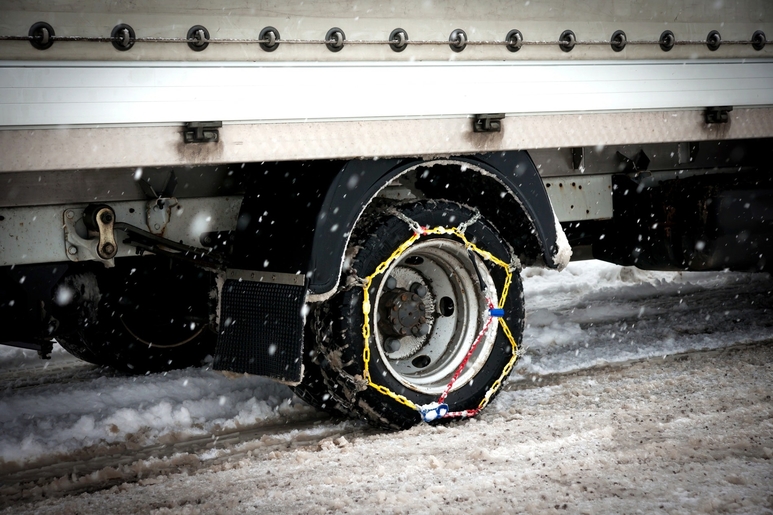
2. Automatic Tire Chains
Automatic tire chains are engaged and disengaged from the cab by pneumatics.
With a press of a button the chain wheel swings out.
With this working mechanism, the strands of steel chain are uninterruptedly slung under the drive wheel.
The provided traction is similar to the conventional tire chains.
The chain wheel should be positioned at the ideal height – 100 ±20 mm above the road surface.
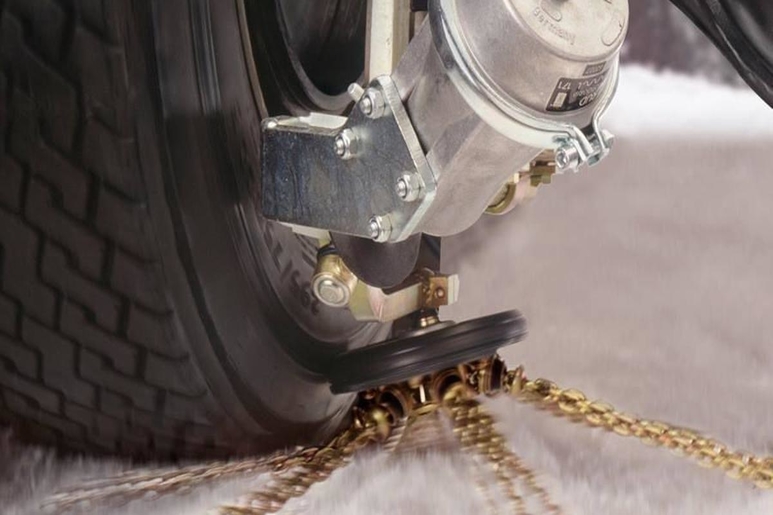
3. Snow Cables
Tire cables are made from hardened steel rollers secured onto cable cross.
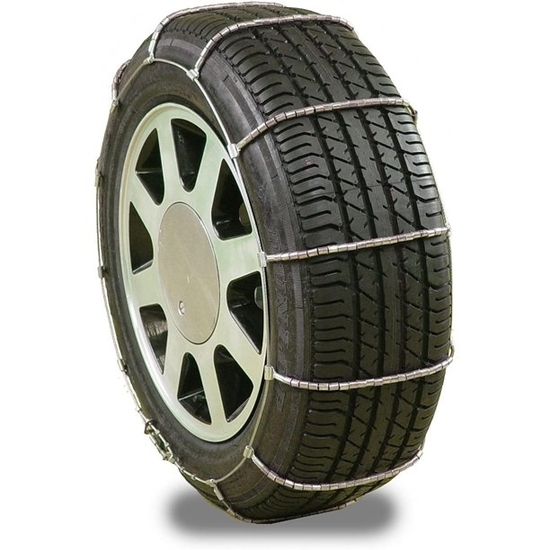
When The Tire Chains Should be put?
When snow is covering the entire portion of the road and when poor driving conditions require safety.
They can be also used in muddy driving conditions.
When the tire chains are connected to the tire, the driver need to drive slower.
It is recommended to drive 30 miles per hour or even slower.
Also, do not press the brake hard or accelerate fast.
Tire chains shouldn’t be used on dry roads as they can cause tires to slip on dry pavement.
Truck Tire Chain Law By States
1. Colorado
The state of Colorado is considered as the strictest state when it comes to truck tire chains.
Truckers must chain up on the four drive tires to be compliant.
The trailers are not required to be chained.
The law begins from September 1st – May 31st.
Throughout this time, commercial drivers are only mandatory to carry chains on Interstate 70 between the Dotsero (Milepost 133) and Morrison exits (Milepost 259).
This is because weather can change very quickly along this stretch of highway, and drivers may have to chain up at a moment’s notice.
The penalty for not carrying chains is $50 plus a $17 surcharge.
2. Nevada
Nevada State does not require commercial truck drivers to carry chains during certain period of time.
Although, they are supposed to chain up the tires during poor weather conditions and icy roads.
Vehicles with a gross vehicle weight of 10,000 pounds or more must use chains or alternative traction devices (ATDs) on drive wheels, as well as on braking wheels of trailers.
The fee for not chaining up is usually $58, in addition to court fees, which vary from county to county.
3. California
California doesn`t require commercial truck drivers to chain-up the truck tires during any specific period of time.
During the winter months, there are special signs established along the highways that inform the drivers for using the chains.
These signs also include:
- R1 – Chains, traction devices or snow tires are required on the drive axle of all vehicles except four wheel/ all-wheel drive vehicles.
- R2 – Chains or traction devices are required on all vehicles except four wheel/ all-wheel drive vehicles with snow-tread tires on all four wheels.
- R3 – Chains or traction devices are required on all vehicles, no exceptions.
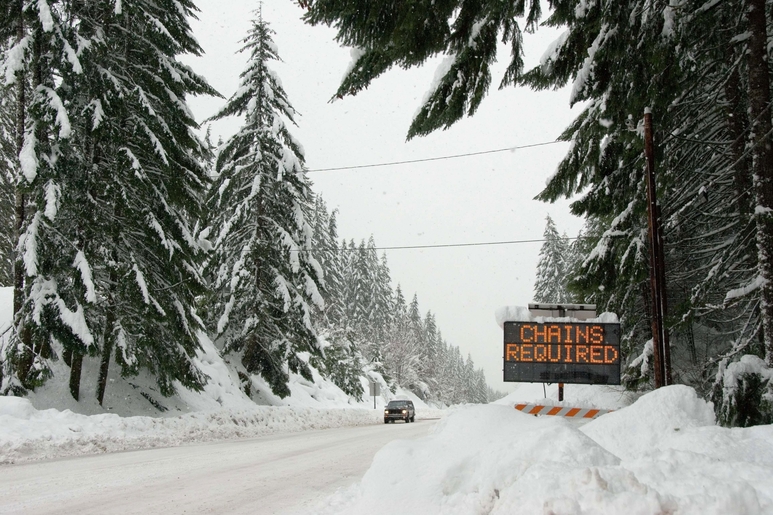
How to put winter tire chains on a semi truck?
First, be parked on a safe location that is away from traffic.
Then take the chains out of the box and place them flat on the ground with their hooks up.
Place the chains near the tires.
Drape the chains over the tire.
The half of the chains need to be on the left and the other half to the right.
Make sure the cams are on the outside of the tire and the hooks are on the inside.
Put the chains as close to the front of the tire and then drive the truck forward over the chains.
Get out of the truck and hook the inside chain before fastening the outside chain.
Use the cam tightening gadget to properly tighten the chains around the tire.
Test the chains by driving the truck for a short distance to make sure that they aren’t loose.
It is also a smart to practice putting them on and off in better weather conditions.
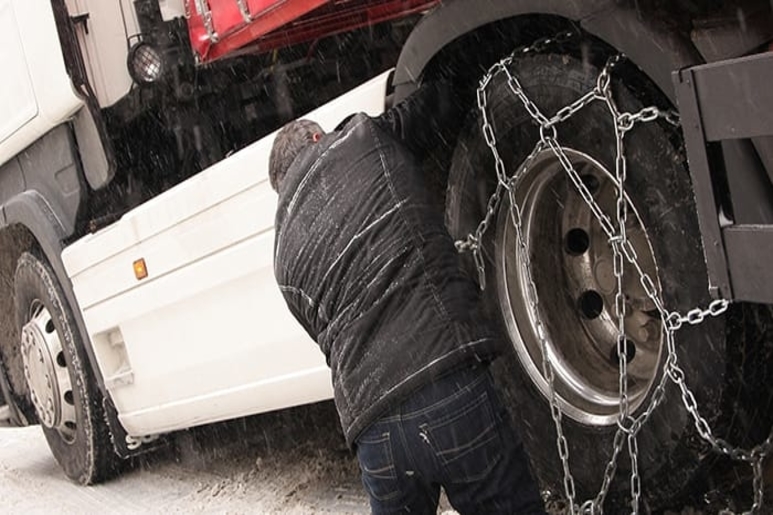
Conclusion
Ice and Snow means take it slow and always use adequate winter truck equipment!



